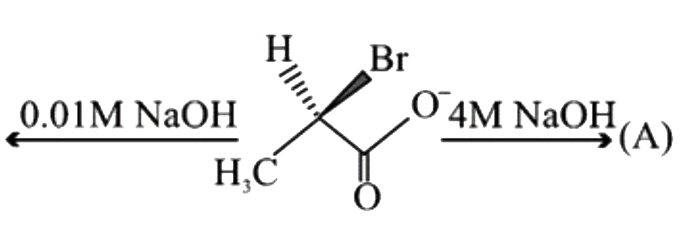Which of the following is/are correct regarding oxidation state of elements in their compounds:
All d-Block elements show multiple oxidation state.
All p-Block elements show multiple oxidation state.
All s-Block elements show single oxidation state.
Some of 18 group elements can show multiple oxidation state.
The correct Answer is:C, D
To determine which statements regarding the oxidation states of elements in their compounds are correct, we will analyze each statement step by step.
Step 1: Analyze the first statement
Statement: All D block elements show multiple oxidation states.
Analysis: This statement is incorrect. While many D block elements do exhibit multiple oxidation states, not all of them do. For example, Scandium (Sc) primarily shows a +3 oxidation state and does not exhibit multiple oxidation states.
Conclusion: This statement is false.
Step 2: Analyze the second statement
Statement: All P block elements show multiple oxidation states.
Analysis: This statement is also incorrect. While many P block elements can show multiple oxidation states, some do not. For instance, Fluorine (F) only shows a -1 oxidation state and does not exhibit positive or zero oxidation states.
Conclusion: This statement is false.
Step 3: Analyze the third statement
Statement: All S block elements show a single oxidation state.
Analysis: This statement is correct. S block elements consist of Group 1 (alkali metals) and Group 2 (alkaline earth metals). Group 1 elements always show a +1 oxidation state, while Group 2 elements always show a +2 oxidation state.
Conclusion: This statement is true.
Step 4: Analyze the fourth statement
Statement: Some of the group elements show multiple oxidation states.
Analysis: This statement is correct. While noble gases typically show a zero oxidation state, certain elements like Xenon can exhibit multiple oxidation states in compounds (e.g., XeF6 shows +6 oxidation state, XeO3 shows +6 oxidation state, etc.).
Conclusion: This statement is true.
Final Conclusion
Based on the analysis:
- The correct statements are:
- Statement 3: All S block elements show a single oxidation state (True).
- Statement 4: Some of the group elements show multiple oxidation states (True).
Summary of Correct Statements
- Correct Statements: Statement 3 and Statement 4.
Statement: All D block elements show multiple oxidation states.
Analysis: This statement is incorrect. While many D block elements do exhibit multiple oxidation states, not all of them do. For example, Scandium (Sc) primarily shows a +3 oxidation state and does not exhibit multiple oxidation states.
Conclusion: This statement is false.
Statement: All P block elements show multiple oxidation states.
Analysis: This statement is also incorrect. While many P block elements can show multiple oxidation states, some do not. For instance, Fluorine (F) only shows a -1 oxidation state and does not exhibit positive or zero oxidation states.
Conclusion: This statement is false.
Statement: All S block elements show a single oxidation state.
Analysis: This statement is correct. S block elements consist of Group 1 (alkali metals) and Group 2 (alkaline earth metals). Group 1 elements always show a +1 oxidation state, while Group 2 elements always show a +2 oxidation state.
Conclusion: This statement is true.
Statement: Some of the group elements show multiple oxidation states.
Analysis: This statement is correct. While noble gases typically show a zero oxidation state, certain elements like Xenon can exhibit multiple oxidation states in compounds (e.g., XeF6 shows +6 oxidation state, XeO3 shows +6 oxidation state, etc.).
Conclusion: This statement is true.
Based on the analysis:
- The correct statements are:
- Statement 3: All S block elements show a single oxidation state (True).
- Statement 4: Some of the group elements show multiple oxidation states (True).
- Correct Statements: Statement 3 and Statement 4.
Topper's Solved these Questions
- PERIODIC TABLE & PERIODICITYBook:RESONANCE ENGLISHChapter:PERIODIC TABLE & PERIODICITYExercise:Exercise-2
Explore 1 Video
- PERIODIC TABLE & PERIODICITYBook:RESONANCE ENGLISHChapter:PERIODIC TABLE & PERIODICITYExercise:Exercise-3
Explore 1 Video
- PERIODIC TABLE & PERIODICITYBook:RESONANCE ENGLISHChapter:PERIODIC TABLE & PERIODICITYExercise:Exercise-1
Explore 1 Video
- P-BLOCK ELEMENTS (HALOGEN & NOBLE GASES)Book:RESONANCE ENGLISHChapter:P-BLOCK ELEMENTS (HALOGEN & NOBLE GASES)Exercise:APSP PART-3
Explore 22 Videos
- QUALITATIVE ANALYSISBook:RESONANCE ENGLISHChapter:QUALITATIVE ANALYSISExercise:INORGANIC CHMISTRY(Qualitative analysis)
Explore 35 Videos
Similar Questions
Which of the following is incorrect regarding oxidative phosphorylation?
View SolutionWhich of the following match is/are correct regarding B, Al, C and S elements?
View Solution Which of the following is correct regarding compounds [A] and [B] ?
Which of the following is correct regarding compounds [A] and [B] ?
View SolutionWhich of the following compound contain zero oxidation state of Fe :
View SolutionWhich of the following element exhibits maximum oxidation state
View SolutionWhich of the following elements never has an oxidation state +1?
View SolutionWhich of the following elements can have negative oxidation states.
View SolutionWhich of the following element does not show −3 oxidation state.
View SolutionWhich of the following is true regarding the hydroboration oxidation of alkene ?
View SolutionWhich one of the following elements show different oxidation states?
View Solution

